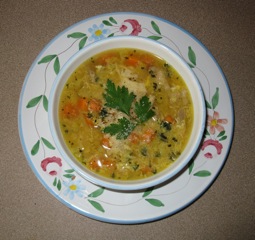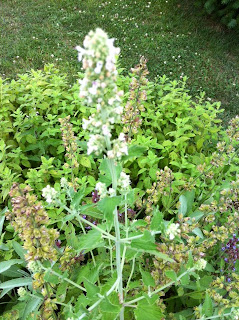We all know the feeling…the tickle at the back of the throat.
The sniffles. The feeling that you are about to have a week of misery ahead. It’s
that awful feeling of catching a cold. While conventional medicine has no cure
for the common cold, nature has many ways to help prevent it.
As much as I had always looked forward to my kids going back
to school after summer vacation, a part of me dreaded it because invariably,
several weeks into the school year, they would wake up with a bad cold. Since using
herbs beginning a few weeks before the start of school, the colds are less
frequent, and when they do succumb, the symptoms are less severe and do not
last as long.
Here are a few tips for staying healthy this cold and flu
season:
Elderberry is an old standby for preventing and treating colds
and flu. A clinical trial showed that an elderberry product ended flu within 3
days. Research has shown that elderberry juice stimulates the immune system and
directly inhibits the flu virus. Making your own elderberry syrup is simple. In
a saucepan, combine 1 cup of fresh or .5 cup of dried organic elderberries, 3
cups of water, and a cinnamon stick, 3 cloves, or some ginger if desired.
Simmer for about 30 minutes, smashing the berries to release their juice.
Strain, firmly pressing all the liquid out of the berries. Allow to cool, and
add a cup of honey and/or a fruit concentrate syrup. Store in refrigerator.
Take a spoonful or two several times per day. Some elderberries are toxic, so
be sure to know what you are harvesting if gathering your own!
Many people swear by Echinacea – an immune stimulant - for
stopping a cold in its tracks. Echinacin, a compound found in Echinacea, is
reported to stop bacteria from forming the enzyme that helps make cells more
susceptible to infection. 50-60 drops of the alcohol extract every 2-3 hours
may be taken at the very first sign of a cold.
Jade Windscreen is an ancient Chinese herbal formula said to
“protect you like a jade screen”.
In Chinese medicine, a pathogen is said to enter the body if the “wei
qi” is weak. If this protective wei qi that flows just under the skin is
depleted or weak, the pathogen will take hold and cause illness. Jade Windscreen
strengthens the wei qi. In China, this formula is clinically the preferred
method for treating children who experience frequent infections like cold and
flu. Jade screen should be started a few weeks before cold and flu season.
Another famed Chinese formula, Yin Chiao is used for relief
of cold and flu symptoms and may be taken at the first sign of a cold or as a
preventive when exposed to someone with a cold or travelling by plane. This
formula is not taken for extended periods.
Good old garlic is amazingly effective for preventing and
treating lung infections. The best way to take garlic is chopped fresh, but do
take it on a full stomach to prevent irritation. An easy way to take garlic is
to cover a chopped clove with honey on a spoon and swallow it.
Sweat therapy can also be very effective at thwarting a
cold. At the first sign of a cold, drink a cup or two of a hot diaphoretic tea
to induce a gentle sweat. Elder flower, yarrow, and peppermint is a nice blend.
Then get under the covers in bed and sweat! I have had much success using this
blend. The cold virus cannot survive at a raised body temperature, which is why
it is usually not a good idea to suppress a fever unless it is very high or
prolonged. This may result in prolonged illness.
Eating right and getting enough sleep is very important for
a strong immune system. Diets high in sugars and processed foods can weaken the
immune system and make us more susceptible to cold and flu. Some people may
benefit from abstaining from mucus-promoting foods like milk and cheese.
Warming foods should be emphasized…soups and stews, ginger tea, and foods
spiced with ginger, cinnamon, thyme, oregano, garlic, hot peppers, etc.
Having adequate levels of vitamin D has been shown to
decrease cold and flu. Have your levels tested and supplement if necessary.
Zinc is a mineral important for immunity as well, but too much can suppress
immunity.
And you’ve heard it before but it’s worth repeating…
frequent hand washing and keeping hands away from your face can help stop the
spread of germs.
The Artful Herbalist, LLC carries a number of cold and flu
products including Plum Flower brand Jade Windscreen and Yin Chiao, Natura
S-Clear, Echinacea extract, herbal throat sprays and pre-made formulas, as well
as customized formulas.






